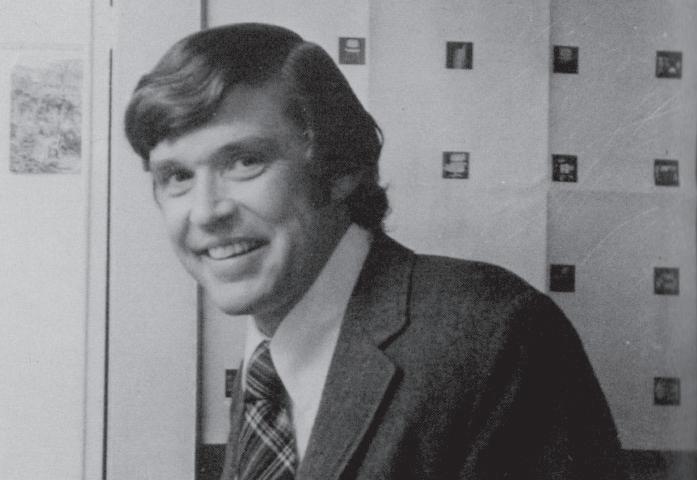
24 minute read
Leadership
Calhoun Welcomes New Academic Leadership
This year Calhoun defined grades three to five as their own division, Lower School—Elementary, a move that allows us to focus and enhance programming for third-to-fifth-grade students during one of the most exciting developmental stages of their lives. Under this new divisional structure, Alison Rothschild ’85 is focusing her energies at 74th Street as Director of Lower School—Early Childhood, and we welcomed Debra Jeffreys-Glass as Director of Lower School—Elementary. Debra joins us from Little Red School House & Elizabeth Irwin High School (LREI), where she served as assistant principal of the lower school. Previously, she taught kindergarten and fourth grades and held a range of other roles at Ethical Culture Fieldston School in Manhattan. Debra has a master’s in early childhood and elementary education from Bank Street Graduate School of Education, and a master’s in private school leadership from Teachers College. Debra’s first career was in the film industry, and she has a BA in radio, television and film from Temple University.
Q&A WITH DEBRA
By fifth graders Simone Adusei and Amaya Offor
Amaya: What made you want to work at Calhoun? Debra: I know a lot of teachers who got their start here, and they are some of the most amazing educators that I know.
Simone: What do you like about Calhoun? Debra: The families, teachers and students are really welcoming.
Amaya: What was your favorite class in school? Debra: English. I love writing, and I had a teacher in high school who told me that I could be a writer if I wanted to because I enjoyed it and did it well.
Simone: What was your favorite part of your job before you came here? Debra: My favorite part was working with people. I like helping people get to their “aha” moments and learn something new, whether that’s students or grown-ups.
Simone: What is your favorite lunch at Calhoun so far? Debra: I’m hoping that it’s today’s fish tacos because I love fish.
Julie Torres joined Calhoun this fall as Academic Dean, Grades 6–12.
In this new position, Julie coordinates the implementation and alignment of our academic program in the Middle and Upper School divisions. Julie has more than two decades of experience in education. She has a BA in political science from Barnard, a master’s in secondary science education from Teachers College, and an Ed.D in education leadership from the University of Pennsylvania. Prior to Calhoun, Julie was the assistant principal at Paul D. Schreiber High School in Port Washington, NY.
Nayantara Mhatre is Calhoun’s new Middle School
Dean of Students, responsible for administering, developing and supervising all aspects of student life in the Middle School division. Prior to Calhoun, Nayantara served as diversity and social studies coordinator at Ethical Culture Fieldston School. She has a master’s in educational leadership and museum education from the Bank Street Graduate School of Education and a BA in art history from Tufts University.
Katy Saintil joined Calhoun this fall as Director of Administrative Services and
Auxiliary Programs. Katy comes to us from the School at Columbia University, where she served as director of external programs. Katy is a graduate of Columbia College and holds a master’s in nonprofit management from its School of Professional Studies.
In this new role, Katy provides strategic leadership to our after-school and summer programming, serves as the primary contact point for individuals or organizations interested in renting Calhoun’s facilities and oversees the 81st Street library, nurse and school office.
Remembering Three Cherished Calhouners
Pem McCurdy Former Head of School
Philip (Pem) McCurdy, who served as Calhoun’s sixth Head of School, from 1969 to 1973, passed away on August 20, 2019, at the age of 84.
Pem led Calhoun during a pivotal time in our history, guiding the school’s transformation from an all-girls’ to coeducational environment. During his tenure, he mapped the plans to relocate to our current 81st Street building, evolved our educational program, doubled enrollment and launched initiatives to involve Calhoun more in the broader community.
Pem was born in Boston and spent much of his early life in Brookline and Wellesley, MA. He earned an AB (cum laude) from Harvard College in 1956 and an MA in teaching from Harvard Graduate School of Education in 1957. His career included work in both public and private schools, as a biology teacher, science department head and science education specialist. Throughout, Pem remained dedicated to the educational and social development of young learners. He believed that “young people want help, trust and humanizing love to get on with the task of independent growth.” Pem retired in 1999 and moved with his wife, Marla, to Maine. In addition to Marla, he is survived by two daughters, Lisa and Kristina, and three grandchildren.
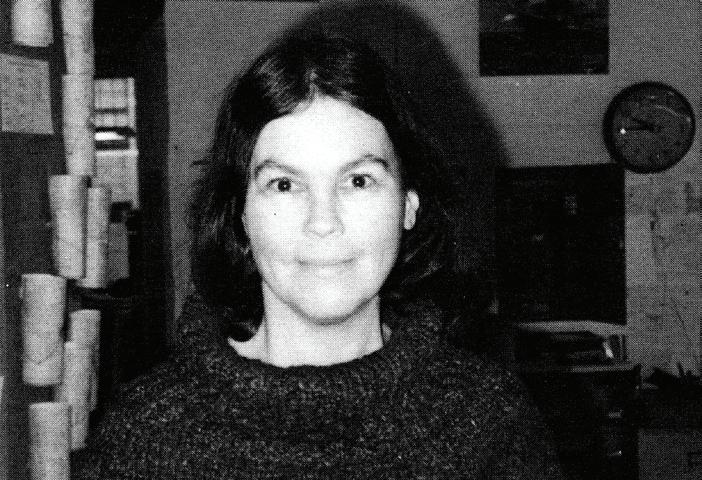
Jolly Uhry Former Lower School Teacher
Longtime and beloved former teacher Jolly Uhry passed away on August 26, 2019. Jolly joined Calhoun in 1973 as a Lower School art teacher, and later transitioned to teaching Lower School English. She had a passion for early childhood and connected with students in a way that brought learning to life. Alums who were fortunate to be in her classroom often reflect on her nurturing warmth, dedication to each child’s growth, and commitment to the community. Though she departed Calhoun in 1988, the Uhry-Thompson Award still carries her name; it is presented annually to a Calhoun teacher who demonstrates excellence in the classroom.
Jolly earned two master’s degrees and an Ed.D in education at Columbia University. She served as a member of the faculty at Teachers College until joining Fordham University, where she was a leader in preparing teachers at the Graduate School of Education for more than 20 years. She became an expert in dyslexia, with her primary research focusing on literacy education. She was named a professor emeritus at Fordham after her retirement. Jolly is survived by her husband, Alfred Uhry, who also taught at Calhoun; four daughters, all Calhoun graduates, (Emily Uhry ‘79, Elizabeth Uhry MacCurrach ‘81, Kate Uhry ‘84 and Nell Uhry Burdett ‘87); two sisters and eight grandchildren.

Glee Zusi Former Lower School Teacher
We are saddened to report the death of Glee Zusi, who spent 16 years as a first and second grade teacher at Calhoun from 1986 to 2001. Glee passed away on October 3 at age 89. A graduate of SUNY Geneseo, Glee was a true Calhoun icon. If you passed through elementary school at Calhoun in the 80s or 90s, it’s likely your path went through Glee’s classroom. She had incredible patience and passion for teaching young minds how to read and write, focusing each child on the books that would excite them and build on their early development. Those who were fortunate to sit in her classroom circle also recall her great sense of humor and infectious laughter. In all, she prepared hundreds of kids for success in their future academic journeys. Even upon her retirement, she continued to return to Calhoun for several years in a substitute teaching role. Glee’s two children are both Calhoun alums as well. Jane Zusi Flanders ’81, who lives in Brooklyn, is a creative partner for Pentango; her son, Peter Zusi ’84, is a professor of Czech and German literature at the University College London. She also leaves behind two granddaughters, Clara (17) and Daisy (15).
Winter Fair Showcases Calhoun Creatives
The creativity of our community was on display at the Calhoun Winter Artists and Creatives Fair, held December 13 and 14 at 81st Street. The event featured unique handmade goods—from ceramics to jewelry, baked goods to clothing—all created by Calhoun faculty, staff, alumni, parents, students and friends.
It was a meaningful time to not only celebrate the talent of Calhouners, but also connect as a community. “The opportunity to share ideas with alums, families and colleagues was one of the most affirming experiences I’ve had at Calhoun,” says Upper School art teacher Auguste Elder, who was among the vendors at the fair. “It was a joy to ’talk shop’ with former students who are daring to bring their ideas into the world. Many [of these] concepts began as independent study projects at Calhoun. [The winter fair] made me feel proud of our school in ways that are difficult to put into words.”

WINTER ARTISTS AND CREATIVES FAIR VENDORS
Faculty & Staff
Auguste Elder, Upper School art teacher Cha Bay Fine Teas & Rough Wares (wood-fired ceramics and tea ware)
Amy Konen, Middle School art teacher Monolo Monkees (whimsical sock monkeys)
Francesca Canin, Upper School counselor Ceramics
Francesco Filiaci, Upper School science teacher Ceramics
Katy Saintil, Director of Administrative Services and Auxiliary Programs Paintings and handmade clothing
Alumni
Mary Engel ’79 Orkin/Engel Film and Photo Archive
Ronit Segal ’85 Tinor Lages (artisan glass and jewelry)
Emily Capkanis ’07 Silk hand-painted clothing and scarves
Liza Garrin ’08 & Stephanie Butta Bijou Sweets (dark chocolate–covered pretzels)
Kate Davis ’10 Knockout (geometric rings with a self-defense edge)
Denisse Jerez ’11 Holiday cookies
Zach Wiener ’14 Thanks Alot NYC (clothing and embroidery)
Current Parents
Doris Cassar (P ’18, ’21) Retro-inspired holiday items
Melissa Honore (P ’26) Made From Heaven (homemade cookies)
Pamela Christman (P ’23) Seashell sculptures and shadow boxes
Angela Boswell (P ’27) Knitty & Knice (decorative knit cacti)
Lisa Fireman Dorhout (P ’24) Sadie Design (custom floral and interior styling)
Students
Violet Clinton, fourth grade Magic wands
Kamille Brewster ’23 and Mireia Rosenblum-Martín ’23 Shirts and lip gloss
Parents of Alumni and Friends
Julia Parish, P ‘14 Julia Parish Jewelry
Angelique Sub, P ‘09 ‘14 Holy Cowl (winter accessories)
Claire Surovell, partner of alum Quilts Michele Gold, friend of Calhoun Rodan + Fields (anti-aging skincare) Jenny Lieberman, friend of Calhoun Saucey and Wubs (wire-wrapped gemstone jewelry) Angela Hopkins, friend of Calhoun Dresses and accessories made in Rwanda
The Anatomy of a Classroom
By Candace Silva
For Calhoun’s youngest learners, it’s not only the curriculum but the physical space in which they learn that supports their academic development. The organization of the classroom and all of the materials that fill it nurture students’ emerging skills in unique ways, allowing Little Calhouners to stretch their thinking, make new discoveries and apply their knowledge. That’s why, when setting up their spaces, teachers make intentional choices, identifying and creating learning opportunities in every corner.
Kindergarten teacher Heather Jupiter ‘92 sheds light on the makeup of her classroom and how it supports rich learning, community-building and engagement.
“ The classroom tells a story—the story of who the kids are, what they’re interested in and the learning they’re experiencing. ” —Heather Jupiter ‘92, Kindergarten teacher

2
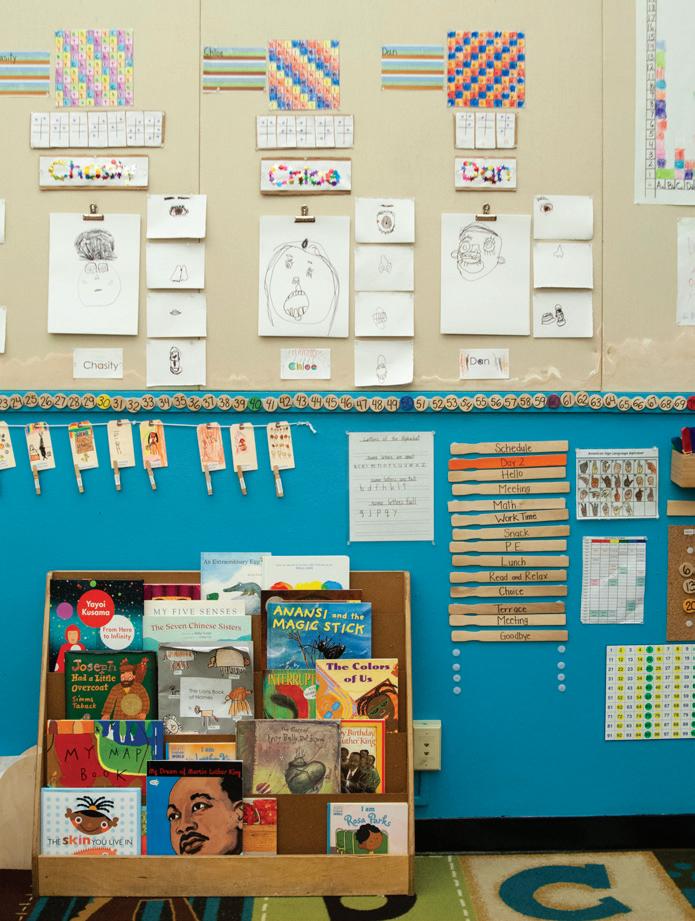

3
[1] Building Foundational Skills
A space for free exploration sets the stage for learning through play.
“The block area is a place where a lot of social and emotional growth happens. Problem-solving, collaborating, math and physics work all take place through the process of engaging with differentsize blocks and figuring out how to make something. We think about what materials we can put here to make sure that the block area is fruitful and inspiring.”
Classroom materials give students opportunities to engage in math thinking throughout the day in organic ways.
“Our math area contains manipulatives that support mathematical exploration. For example, kids will build staircases with Cuisenaire rods, noticing along the way that the rods represent different values.” “I try to think of materials for the dramatic play area that will invite the kids to explore. For example, something like the fabric net will naturally invite them to cordon off a certain space. Or maybe they’ll make a pattern while setting a table. A lot of natural sorting, arranging and observation happens here, which supports continued mathematical thinking.”
[2] Nurturing Young Readers
The deliberate display of text and the labeling of objects in the classroom support emergent literacy skills.
“The labels that we have are very functional. Some labeling also includes images so that it is accessible to our emerging readers. Manipulatives such as small wooden discs featuring sight words are available as resources for any students who want to add words to their drawings or the books that they’re writing.” “We also make sure to have a library full of books that reflect a variety of different identities and experiences.”
[3] Promoting Independence
Students learn how to be responsible for the space around them by being entrusted with classroom objects made of natural materials.
Teacher Talks
Teacher Talks is a series spotlighting the educators of Calhoun and their approach to progressive education. Read the full-length conversations and more interviews at calhoun.org/blog.
AUSTIN APPLEGATE, FOURTH GRADE MATH TEACHER
In addition to teaching the foundational skills of multiplication and division, Austin Applegate equips students with the tools to form a conceptual understanding of math, fostering their ability to be confident and flexible problem-solvers.
Math fluency is not just the ability to know facts; it’s also about being creative
and able to look for different kinds of solutions. You can show students a procedure and have them practice it enough so that they get it right nine out of ten times, but math is so much more than that—it’s understanding why you’re doing what you’re doing. We as a culture equate being good at math with being fast at it. But if you don’t have an understanding of what you’re doing, at a certain point you’ll hit mathematics that you can’t do because you don’t have a conceptual knowledge of why what you’re doing works.
My goal has always been to make sure that every single learner finds the tools to master the material we’re studying in class.
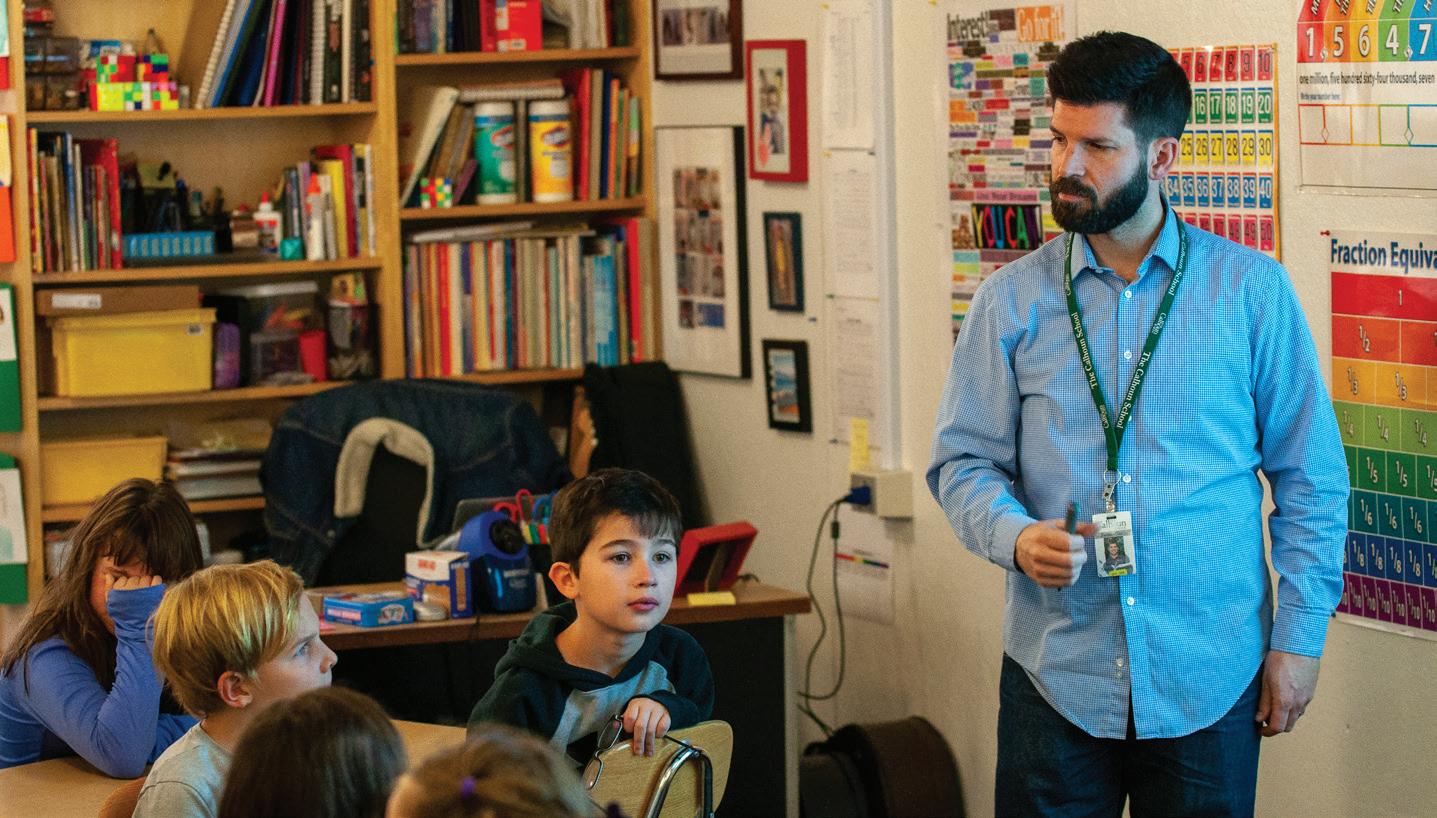
Math is not a subject where there’s a single toolbox that we all use in the same way. When kids tell me something is hard, sometimes I’ll push back and say, “It’s just new. You haven’t done it enough to really know if it’s hard or not.” The idea of viewing struggle as a positive is tough to get kids to buy into initially, so I try to be consistent in delivering that message. The journey of getting through struggle is going to be way more powerful than the thing that you were able to do the first time with no effort.
ELLEN KWON, UPPER SCHOOL ENGLISH TEACHER
Ellen Kwon wants her students to see themselves in literature. Through the analysis of complex themes like race, gender and class, Ellen introduces students to a variety of diverse authors and characters, giving them the opportunity to connect with the text in a personal way.
My goal is to teach literary analysis.
I want students to have the confidence in themselves to know that they have

something to say about a piece of literature. I want them to see themselves as writers, to be able to sit with a piece of literature, a painting or a film and form an argument, and develop confidence in their analytical writing.
Juniors read American literature, so we start with a broader discussion of the concept of the American Dream—who is included in that dream and who is not. Then we look at the themes of coming of age, beauty, race, class and gender, reading texts such as The Bluest Eye, The Catcher in the Rye and A Streetcar Named Desire.
I want students to see themselves in the material. I want them to see each other in it, as well as their parents’ stories or those of other people they know. I think it’s important for the kids to see different voices and people on the page. We read a graphic novel called American Born Chinese by Gene Luen Yang. The character is Chinese-American, but the issues he is facing can apply to anyone. As I move forward, it will remain important for me to continue to find works that represent different voices.
From the Course Catalog
History and Warning by Timothy Snyder; The Drowned and the Saved by Primo Levi
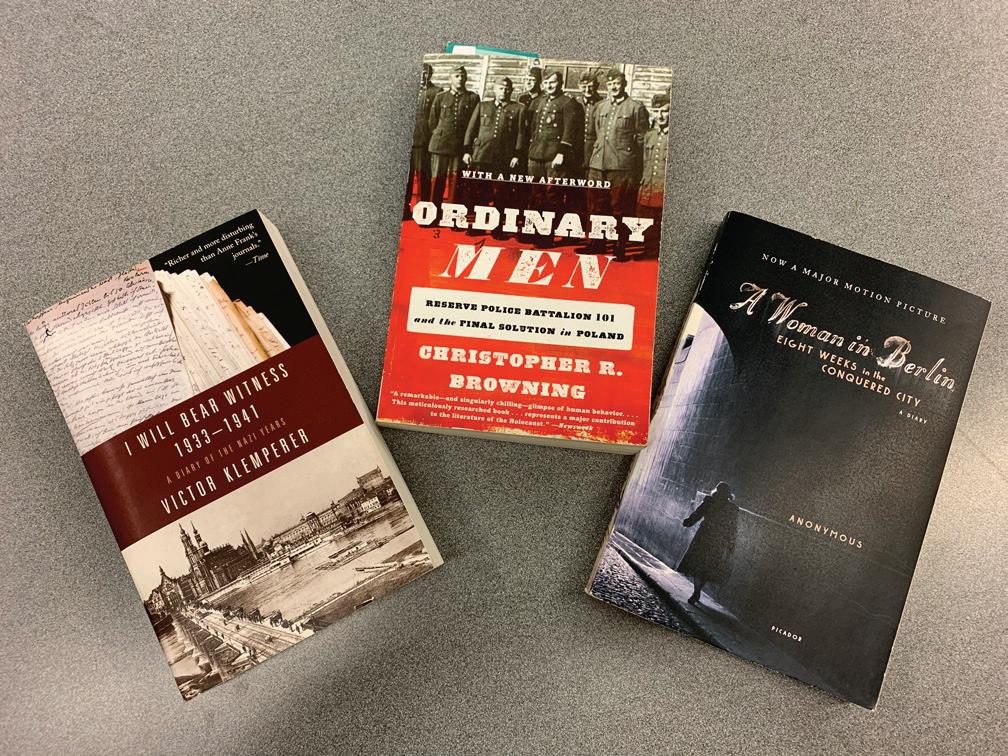
UPPER SCHOOL: UNDERSTANDING NAZI GERMANY
Jason Tebbe, Upper School history teacher This social studies elective examines the history of Nazi Germany and the Holocaust, challenging students to grapple with the central questions of how and why people chose to participate in this notorious regime.
Educational goals
“A main goal of the course is for my students to understand that history is a process of interpretation, and for them to gain the confidence to become scholars,” says Jason. “I also want them to see the Holocaust and Nazi regime not as products of the past, but occurrences that are still relevant today.”
On the reading list
I Will Bear Witness: A Diary of the Nazi Years by Victor Klemperer; Ordinary Men: Reserve Police Battalion 101 and the Final Solution in Poland by Christopher R. Browning; A Woman in Berlin: Eight Weeks in the Conquered City: A Diary by Anonymous
Excerpts from The “Hitler Myth”: Image and Reality in the Third Reich by Ian Kershaw; From Nurturing the Nation to Purifying the Volk: Weimar and Nazi Family Policy, 1918–1945 by Michelle Mouton; Black Earth: The Holocaust as
Key projects
Group project: Students use primarysource research to highlight a specific aspect of the Nazi regime used to control society, such as the Hitler Youth, the Gestapo or the Ministry of Propaganda, and then educate their classmates on the topic using an engaging format, ranging from formal presentations to podcasts or zines.
Final project: Each student conducts research on an area of historical debate, such as the role of women in Nazi Germany, the concept of totalitarianism, or the human capacity toward evil.
Additional assignments include essays based on the readings, and analysis of films, Nazi art and propaganda.
MIDDLE SCHOOL: ART IN THE CITY
Amy Konen, Middle School art teacher This new course leads students on an exploration of art around New York City, through visits to galleries, artists’ studios and public works. Along the way, students gain an understanding of the wide scope of art applications in the world and learn about what it means to be a working artist today.
Educational goals
“My goal is for students to develop a deeper art appreciation and awareness of how much art influences our city,” says Amy. “I want students to develop their critical-thinking and interpretational skills, the ability to look beyond the surface of a work of art and consider the artist’s intent and [the work’s] cultural implications.”
On the reading list
Each week students report on a current event taking place in the arts by reading news sites such as the arts section of The New York Times, Colossal, ARTnews and Artsy.
Key activities
Students are involved in planning some of the visits. They must choose a location, research the cost and logistics and, with support, contact the institutions to organize the trip from beginning to end. Excursions this year included those to the Birds on Broadway sculptures on the Broadway malls, a pop-up exhibition by photographer Richard Corman, the Chuck Close subway mosaics, the Guggenheim, the Brant Foundation Art Study Center and Anna Walinska: Return to the Riverside at The Master Gallery.
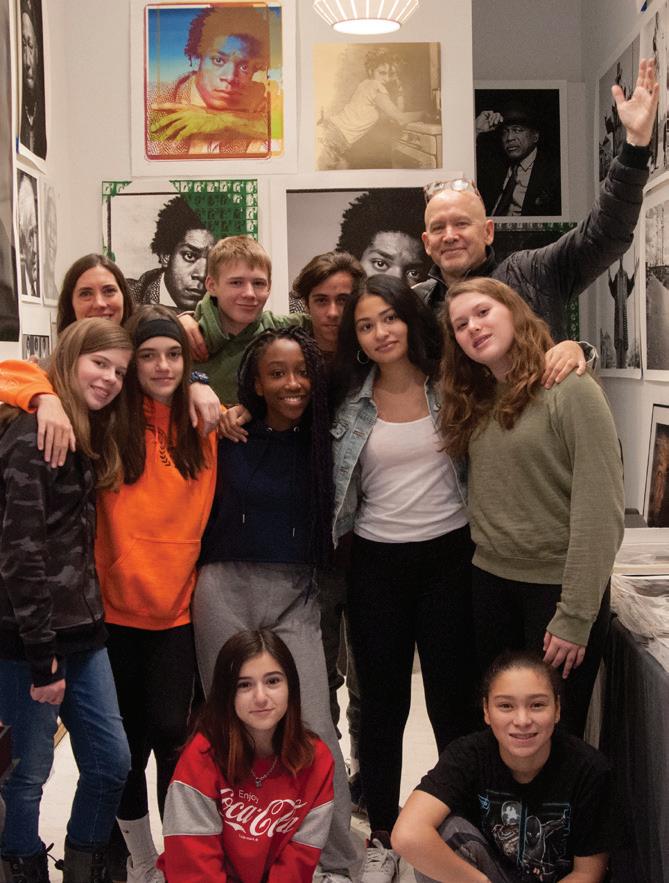
Beyond Walls: Experiential Learning Across Divisions
The learning our students experience reaches beyond the walls of our school buildings. Through field trips and visits from guest speakers, the wider community becomes our students’ extended classroom. Here are some recent examples.
At the Delacorte Theater, home to the annual Shakespeare in the Park plays, Middle Schoolers in the Theater Tech class learned about what it takes to put on an elaborate production.

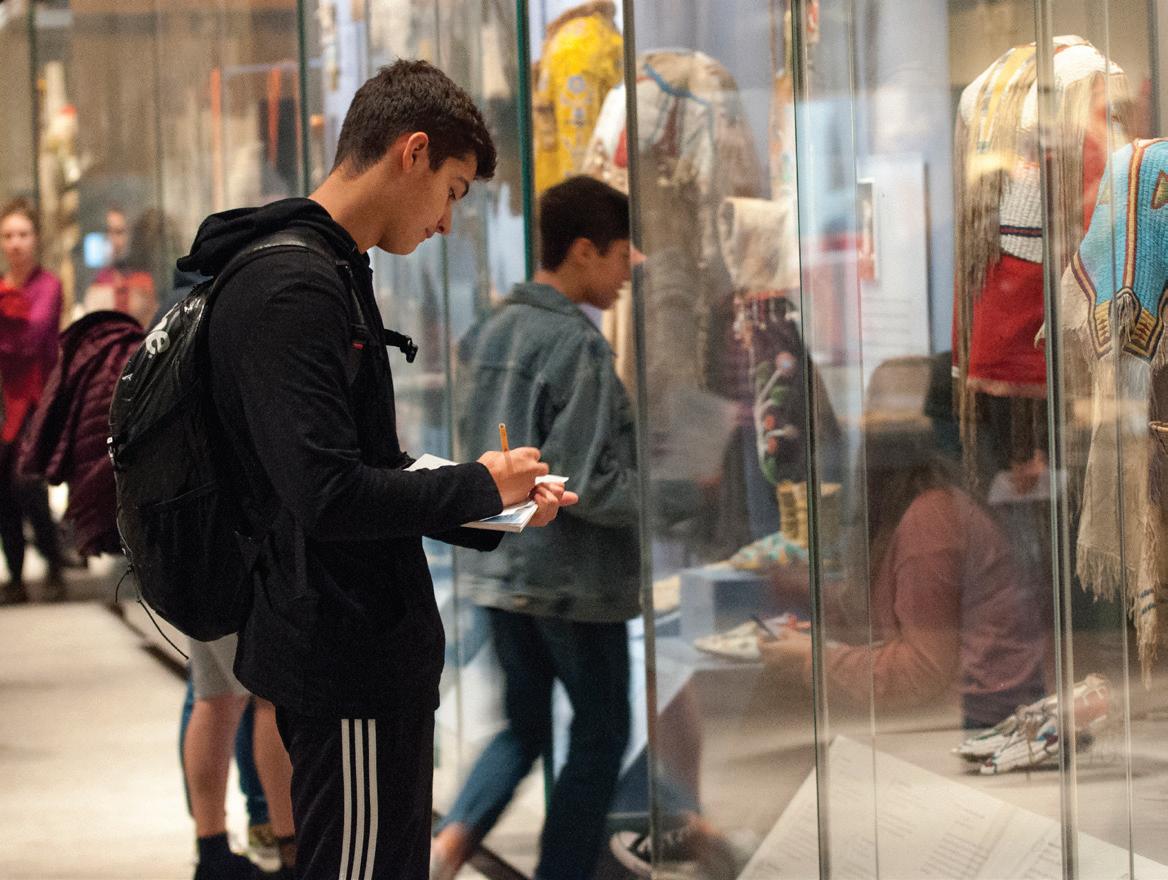
Upper Schoolers in Introduction to Anthropology visited museums around New York City to examine the ways in which indigenous cultures and materials are represented.
Schuyler Bailar, the first transgender athlete to compete on an NCAA Division 1 men’s team, came to Calhoun to share his personal journey with Middle and Upper School students.
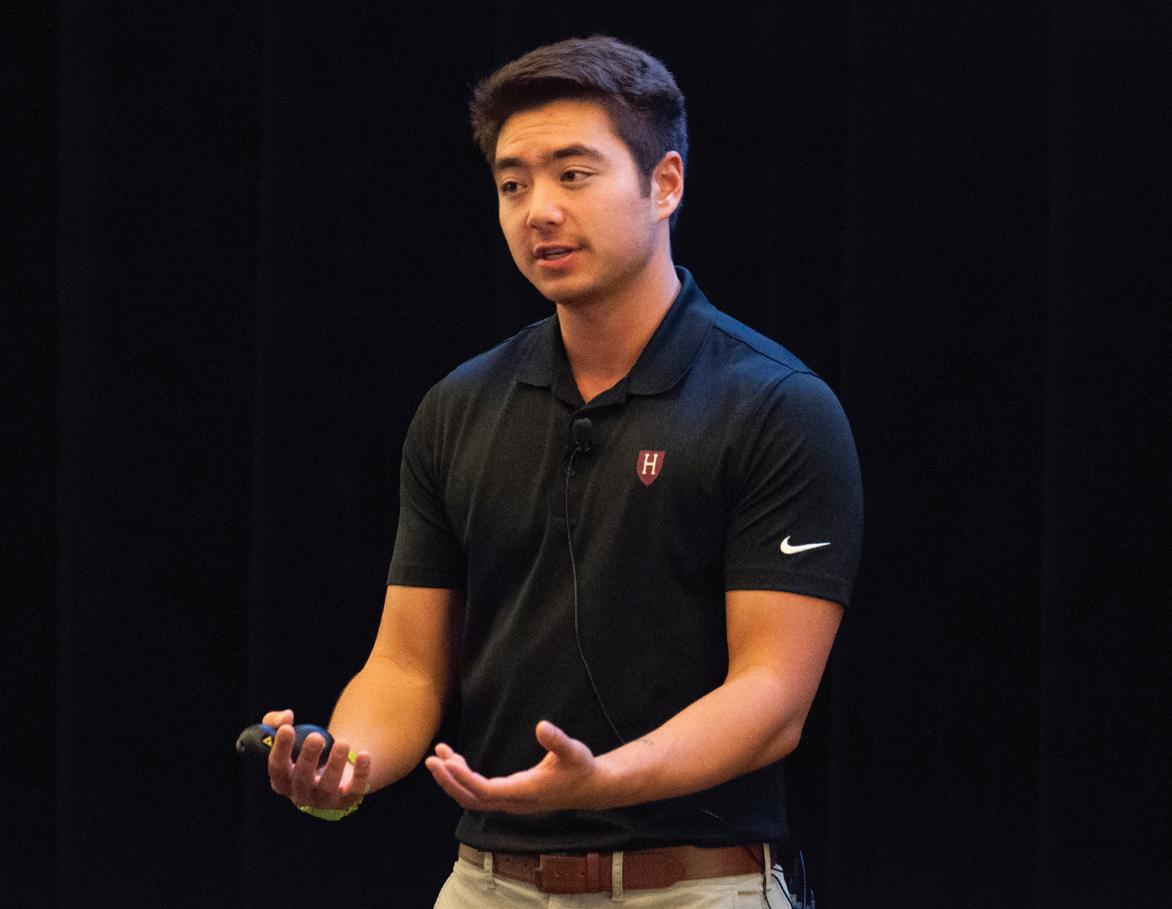

At the Green Chimneys Clearpool outdoor education center in Carmel, New York, fifth graders enjoyed two days of adventure and learning in the great outdoors.
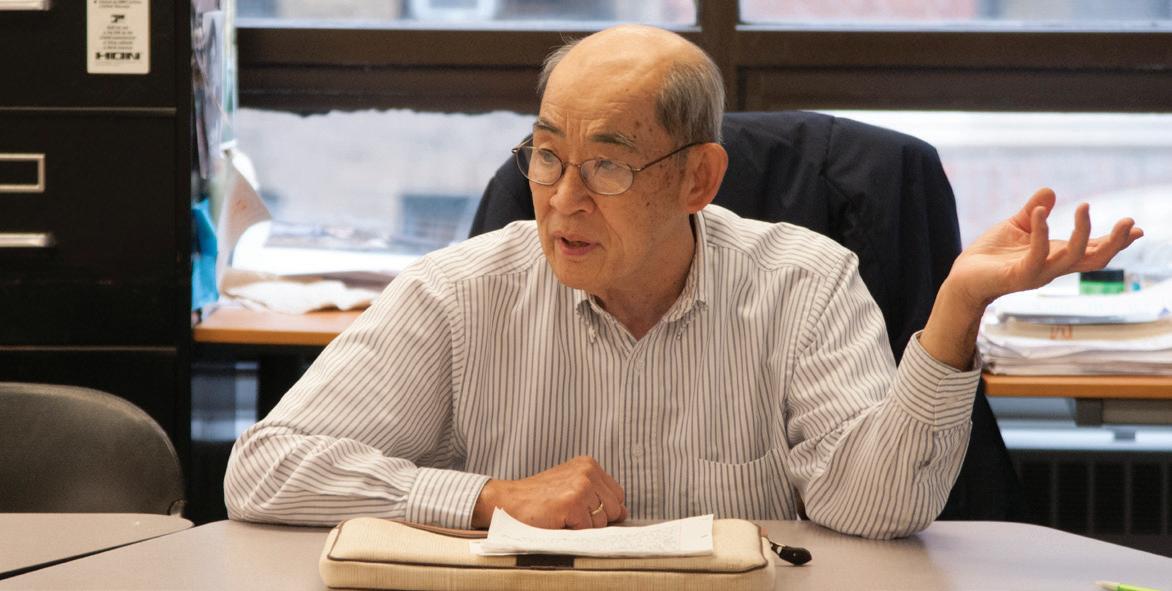

Don Oshima visited an eleventh grade English class to share his experience as a child living in a Japanese internment camp during World War II.
Upper School students in Active Physics hit the streets to calculate the speed of passing cars.

Interactive activities at the National Museum of Math helped Cameras in hand, 4’s students documented the shapes they found around the neighborhood.
After learning about circuits and simple motors, second graders visited the Brooklyn Robot Foundry to make their own simple robots.
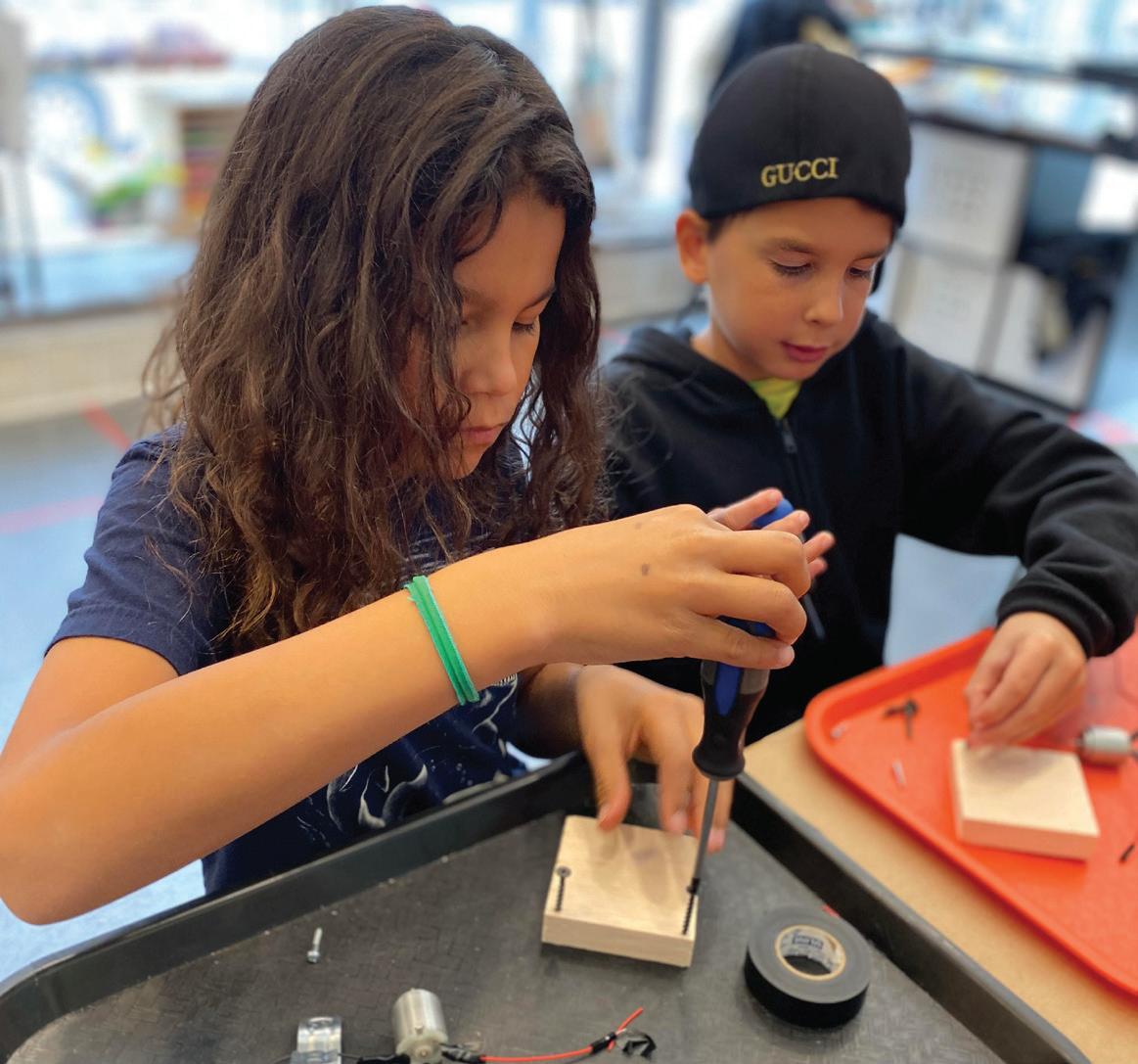
During a field trip to Bowne & Co., Stationers, Upper Schoolers in Graphic Design learned about printmaking and practiced using a letterpress.
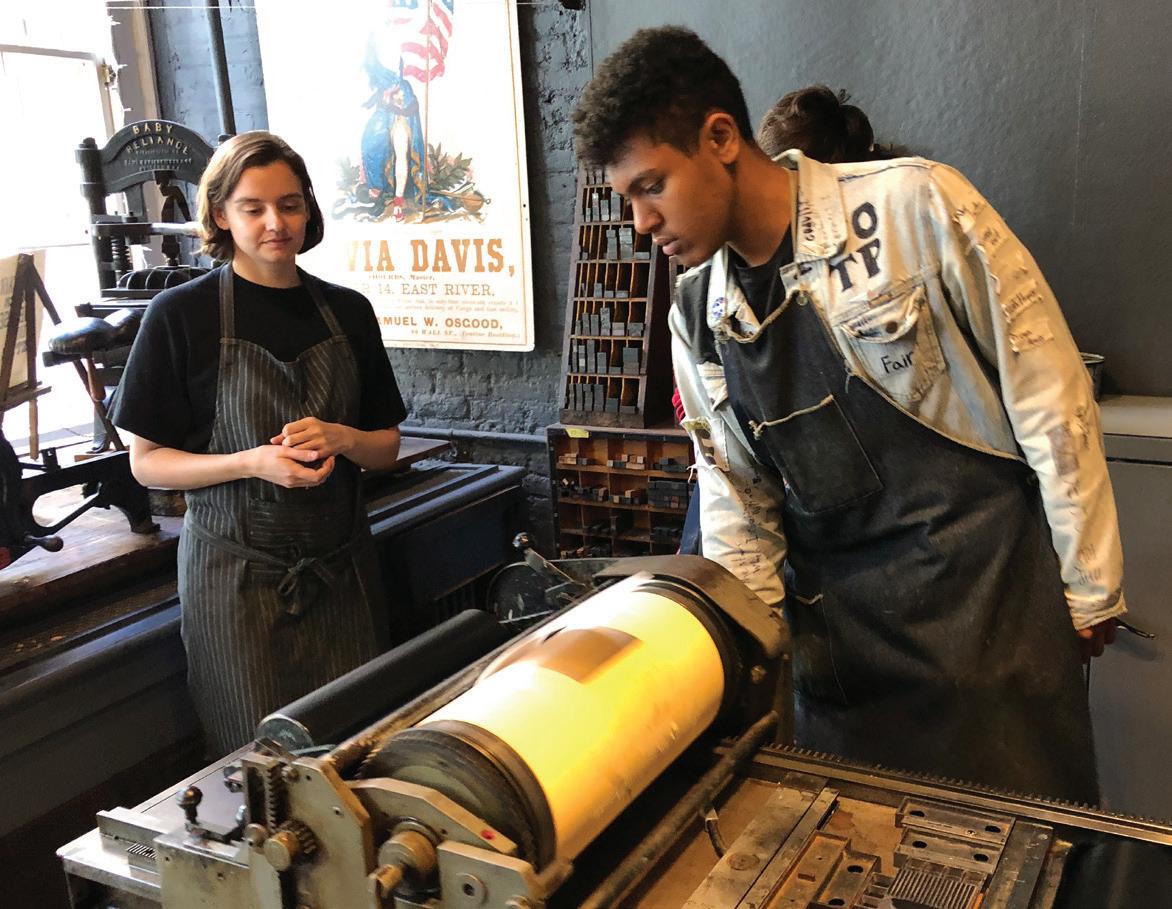
Onstage 1 2 SCHOOL NEWS

UPPER SCHOOL THEATER
The Laramie Project
This fall the Upper School theater program staged The Laramie Project, a documentary-style play by Moisés Kaufman and members of the Tectonic Theater Project. The Laramie Project tells the story of twenty-one-year-old Matthew Shepard, who in 1998 was murdered near Laramie, Wyoming, because he was gay. The talent of Calhoun thespians was evident in the performance, which helped spark deeper conversations with the community.
“The issues raised by this play are important ones and worth exploring as individuals, as families and as a Calhoun community,” says Lee Kasper, Upper School theater-production teacher. With that in mind, the production team spearheaded a number of initiatives to facilitate dialogue with the audience. Before opening night, Calhoun families were emailed a copy of The Laramie Project Study Guide, created by the Brooklyn Academy of Music for their 2013 production of the play, which provided context and guiding questions for conversation.
The theater program also organized a talk-back after Calhoun’s Saturday-matinee performance with the student-actors and Grant Varjas, a member of the Tectonic Theater Project who helped conduct the interviews with Laramie residents that formed the basis of the script. Grant gave insight into the challenges experienced by the original cast and shared that he was impressed by the heights of compassion demonstrated by our students in telling the story. Indeed, the empathy displayed by our Upper School actors in tackling this heavy topic—and the reflections inspired by their performance—was a moving reminder to all of the power of theater.


2
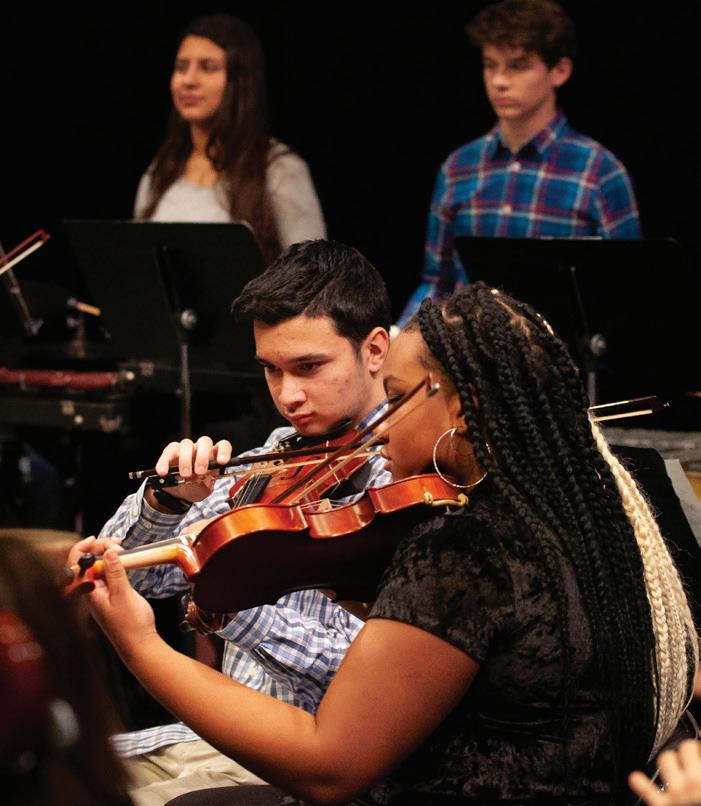
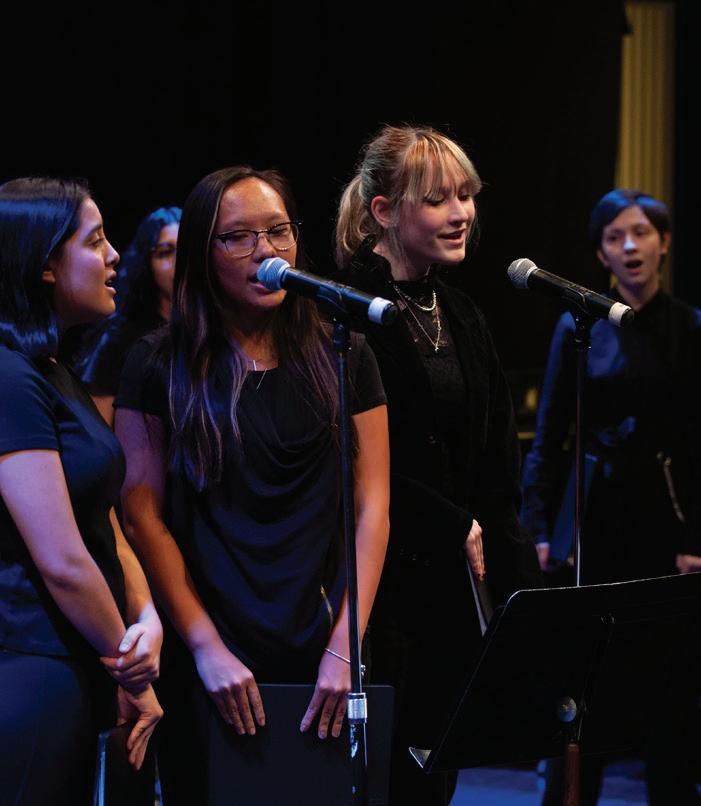
4

MIDDLE SCHOOL THEATER The Blind Date Project
1. Middle School theater students staged a production of The Blind Date Project: Scenes About First Dates, comprised of scenes from Check Please and Check Please: Take 2, by Jonathan Rand, as well as additional scenes written by Calhoun eighth graders.
The student-actors performed hilarious variations of two-person scenes highlighting the hopes and anxieties faced by couples brave enough—or desperate enough—to risk the pitfalls of going on a blind date.
MIDDLE AND UPPER SCHOOL STRINGS CONCERT
2. Middle and Upper School strings players, along with the Upper School Percussion Ensemble, filled the theater with cheery holiday tunes during the annual Winter Concert. Senior Cashel Day-Lewis conducted Johann Sebastian Bach’s Brandenburg Concerto No. 2, and then the musicians turned up the heat with performances of rock-‘n’-roll classics like Led Zeppelin’s “Kashmir” and Queen’s “Bohemian Rhapsody.”
LOWER SCHOOL — ELEMENTARY WINTER SING
3. The Lower School Winter Sing, the season’s perpetual hit concert, once again did not disappoint! Third-through-fifth-grade students sang modern pop songs, childhood favorites, and a standout rendition of “My Shot” from the Broadway musical Hamilton, during which fifth graders took the mic to rap verses!
UPPER SCHOOL CHORUS CONCERT
4. Students from the Upper School Chorus and Vocal Workshop classes, along with the Upper School Strings Ensemble, displayed their talents with songs in Spanish, English and French. The audience was treated to a variety of musical styles, including bachata, musical theater, pop and a cappella.
UPPER SCHOOL JAZZ NIGHT CONCERT
5. Calhoun’s jazz ensembles performed to a packed theater at the first Jazz Night of the year. Nine ensembles, featuring more than 50 student musicians, shared tunes from jazz legends Thelonious Monk, Herbie Hancock, John Coltrane and more. It truly was a wonderful evening of music for all!
A Standout Season for Cougar Sports
The Cougars celebrated a momentous fall season, setting the bar high for the future of Calhoun sports!
Scoreboard success came early, including the Varsity Cross Country team’s first–place finish at an early season meet, and a tremendous 2–2 tie by the Boys’ Varsity Soccer team in their first league game against rival Columbia Prep. Both the Girls’ and Boys’ Varsity Soccer teams continually earned crucial points against opponents, and the Girls’ Varsity Volleyball team won their first games without dropping a single set—a streak that continued all season long!
This fall was also the first-ever Cougar Homecoming, an event that helped keep spirits high as athletes turned toward the last half of the season. The Cougars ultimately finished strong, with every fall team earning a spot in the NYCAL post-season championship tournaments.
For the first time in program history, the Girls’ Varsity Soccer team made it to the NYCAL tournament, and the Boys’ Varsity Soccer team did so for the first time in more than 10 years. The Varsity Cross Country team won third place at the NYCAL Championship Meet, and six runners went on to compete in the state championships.
The Girls’ Varsity Volleyball team won the NYCAL Tournament Championship, marking the twelfth year in a row that they’ve won either the league or tournament championship. Then, in another historic moment for Cougar sports, the team made it all the way to the finals of the NYSAIS State Tournament!
Congratulations to all our athletes for their remarkable efforts this season, which are no doubt paving the way for many more successes to come.

3


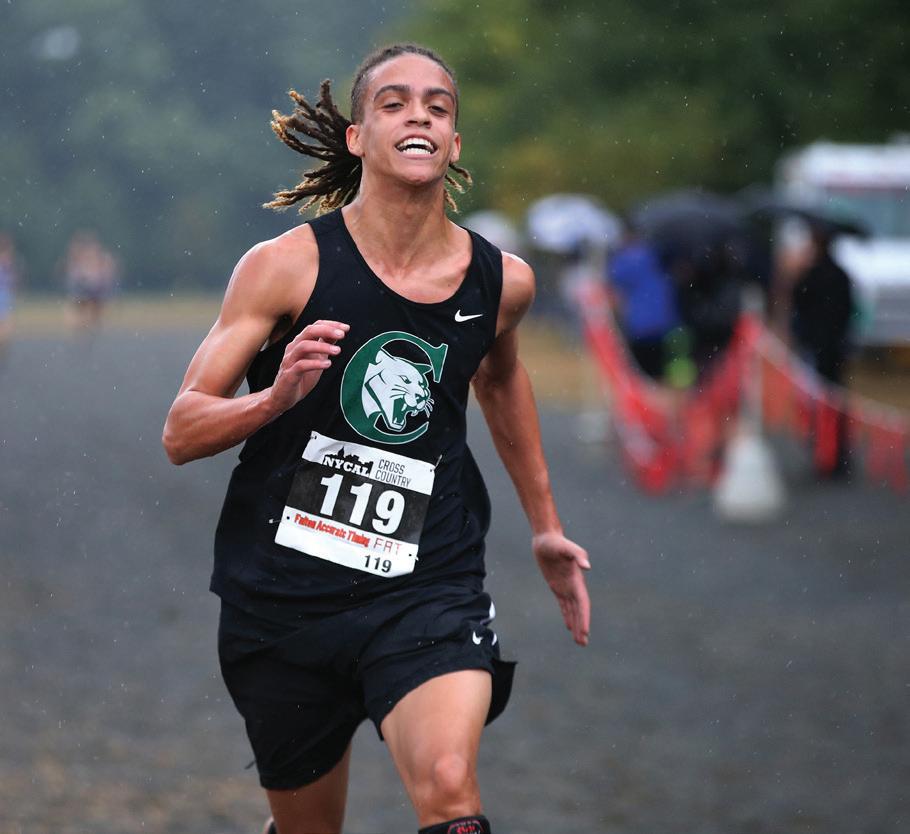
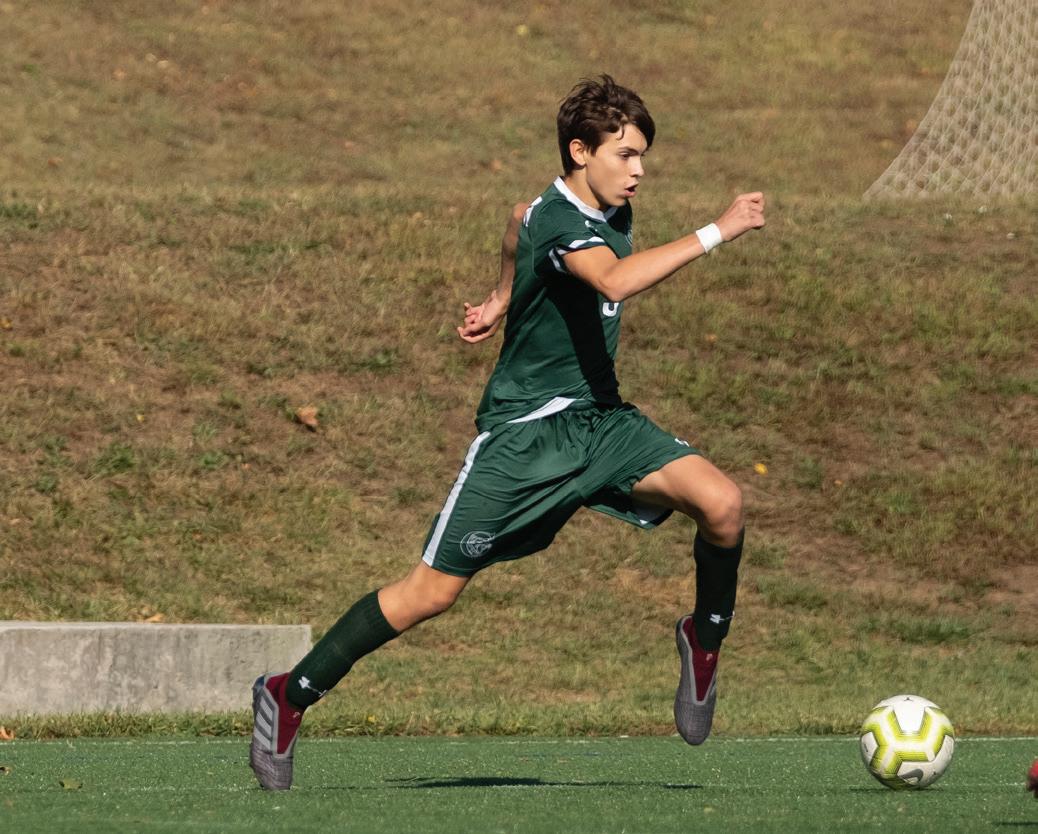
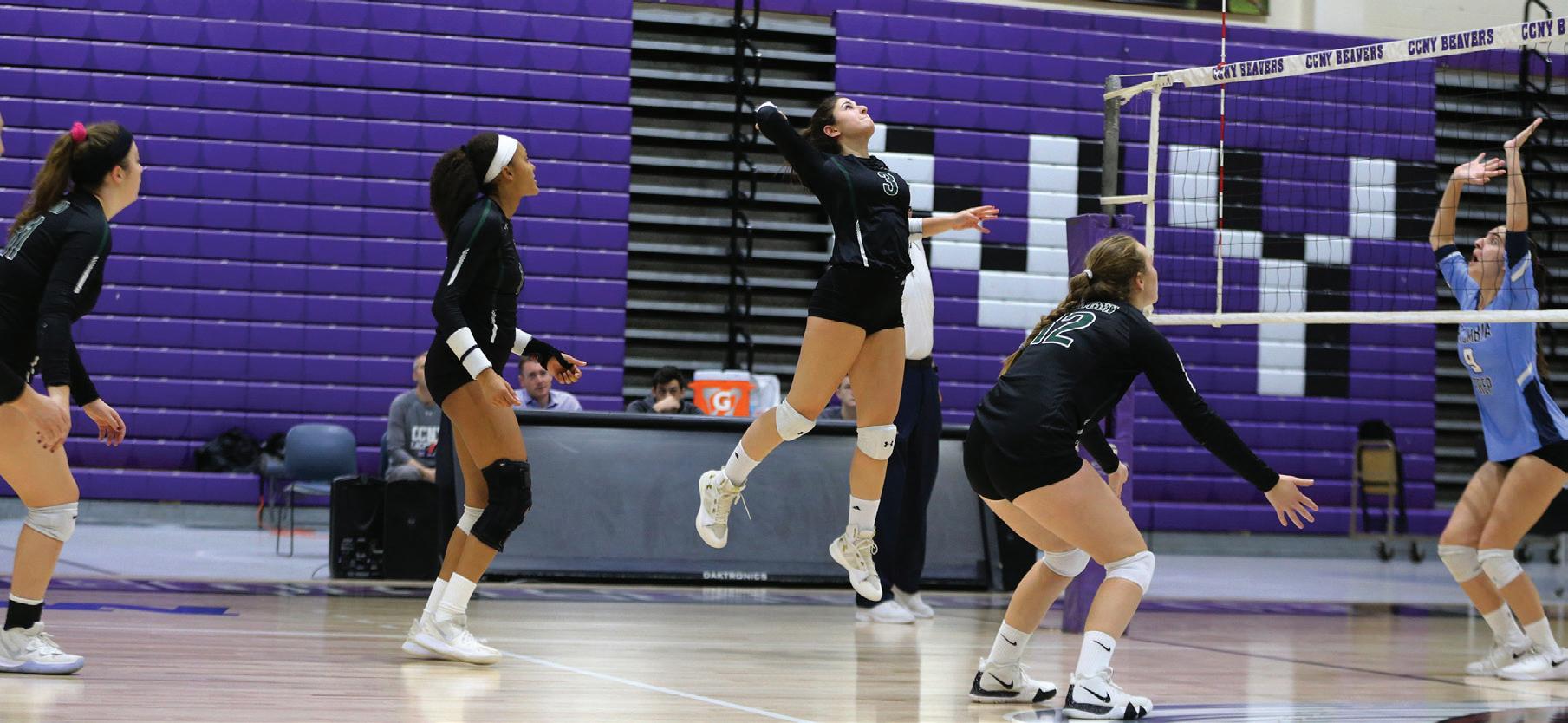
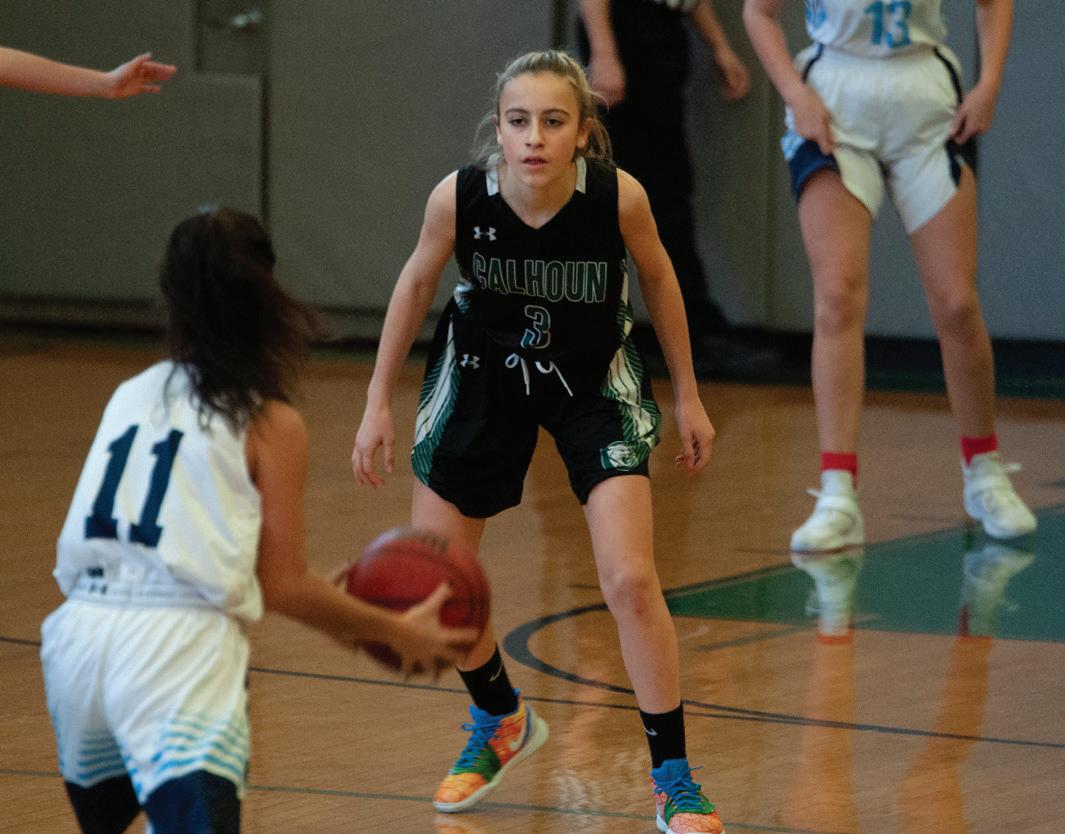
Fall Season Highlights
The undefeated Girls’ Varsity Volleyball team won both the NYCAL regular-season and postseason championships. The team also made it to the finals of the NYSAIS State Tournament for the first time in program history!
The Girls’ JV Volleyball team celebrated an undefeated run for the third year in a row. The team won the regular-season NYCAL Championship as well as the post-season NYCAL Tournament Championship.
The Girls’ Varsity Soccer team finished in third place in NYCAL, and made program history with a first-time appearance in the post-season playoffs. The team ultimately achieved a second-place finish in the NYCAL Tournament.
The Boys’ Varsity Soccer team ended the season in third place in the league. The team showed grit and resilience as they secured a spot in the playoffs for the first time in more than 10 years.
The Varsity Cross Country team showed consistent growth all season long, achieving personal records meet after meet. The team finished second place in the NYCAL regular season and third place at the NYCAL Championship Meet.
Winter Season Highlights
At the Blackout Calhoun Spirit Game, the Girls’ and Boys’ Varsity Basketball teams battled in front of a packed crowd to earn big wins on our home court. Both teams finished the season strong and headed to the NYCAL playoffs to fight for the championship.
SUMMER 2018 At press time, the winter season was ongoing. To see results for the post-season Varsity and JV NYCAL basketball playoffs, as well as the firstever NYCAL Indoor Track Championship Meet, go to


